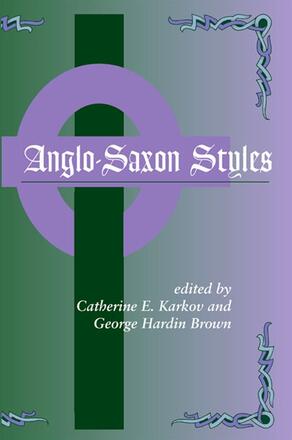
Anglo-Saxon Styles
Alternative formats available from:
Considers the definitions and implications of style in Anglo-Saxon art and literature.
Description
Art historian Meyer Schapiro defined style as "the constant form—and sometimes the constant elements, qualities, and expression—in the art of an individual or group." Today, style is frequently overlooked as a critical tool, with our interest instead resting with the personal, the ephemeral, and the fragmentary. Anglo-Saxon Styles demonstrates just how vital style remains in a methodological and theoretical prism, regardless of the object, individual, fragment, or process studied. Contributors from a variety of disciplines—including literature, art history, manuscript studies, philology, and more— consider the definitions and implications of style in Anglo-Saxon culture and in contemporary scholarship. They demonstrate that the idea of style as a "constant form" has its limitations, and that style is in fact the ordering of form, both verbal and visual. Anglo-Saxon texts and images carry meanings and express agendas, presenting us with paradoxes and riddles that require us to keep questioning the meanings of style.
Catherine E. Karkov is Professor of Art at Miami University and the author of Text and Picture in Anglo-Saxon England: Narrative Strategies in the Junius 11 Manuscript, the editor of Basic Readings in Anglo-Saxon Archaeology, and the coeditor (with Robert T. Farrell and Michael Ryan) of The Insular Tradition, also published by SUNY Press. George Hardin Brown is Professor of English at Stanford University and the author of Bede the Venerable and Bede the Educator.
Reviews
"The value of this book is … that leading scholars in Anglo-Saxon cultural studies have produced new insights into their specialist fields under the stimulus of facing common problems. This should encourage other Anglo-Saxonists to do likewise." — Speculum
"Karkov and Brown are to be congratulated on recruiting for their collection a distinguished array of scholars with interesting essays on Anglo-Saxon art and artifacts (both great and small), architecture, scribal activity, and literature." — Journal of English and Germanic Philology
"…a gracefully synthesized portrayal of the arrays and meanings of style in Anglo-Saxon culture." — CHOICE
"This is one of the few books attempting to synthesize our knowledge on Anglo-Saxon culture in new and interesting ways by finding a bridge between art and literature in the word 'style.'" — Patrick W. Conner, author of Anglo-Saxon Exeter: A Tenth-Century Cultural History
"I like the sweep and ambition of this book and the wide variety of forms/arts that it encompasses. There is something for every Anglo-Saxonist here. I also like the general acknowledgment of the idea of a 'multiplicity of co-existing styles' and the inappropriateness of imposing unitary forms on a culture that is truly syncretic and disparate in ways that have been overlooked by many previous critics." — Gillian R. Overing, coauthor of Double Agents: Women and Clerical Culture in Anglo-Saxon England